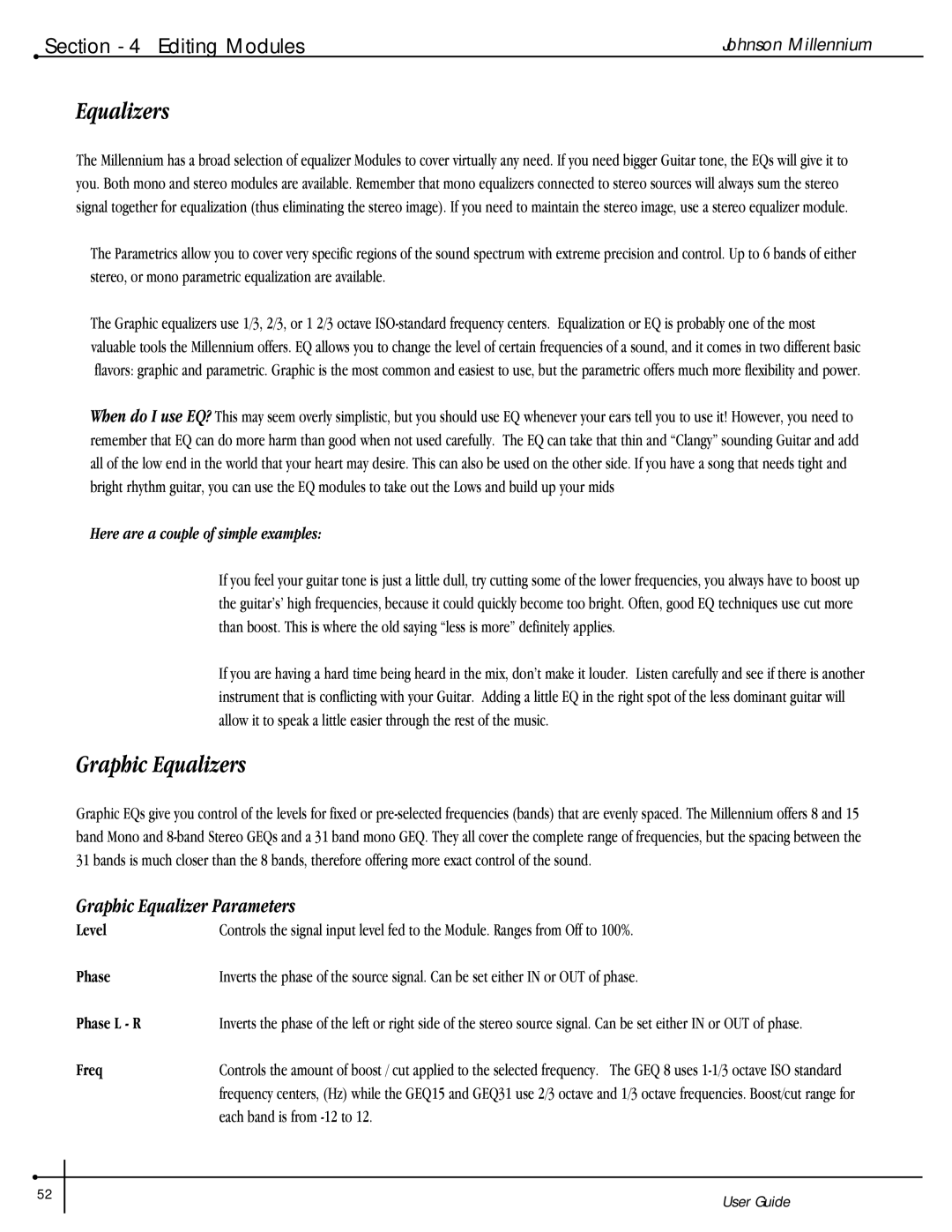Stereo150 specifications
Millennium Enterprises has long been recognized for its commitment to quality and innovation in the audio technology industry, and the Stereo150 amplifier is a testament to that legacy. This high-performance stereo amplifier is designed for audiophiles seeking exceptional sound quality and versatility in their media setups.One of the standout features of the Stereo150 is its impressive power output. With a robust 150 watts per channel, it delivers clear, dynamic sound that can fill even the largest rooms with rich audio. The amplifier employs Class D technology, which not only enhances efficiency but also reduces heat generation, allowing it to operate for extended periods without the risk of overheating. This class of amplification is known for producing high fidelity sound while maintaining a compact form factor, making the Stereo150 an ideal choice for both home and professional setups.
The Stereo150 also incorporates advanced digital signal processing (DSP) technology. This allows for precise audio tuning, enabling users to tailor their listening experience according to their preferences. With customizable EQ settings, you can enhance low frequencies for a more bass-heavy sound or adjust high frequencies for clarity in vocals and instruments. This flexibility ensures that the Stereo150 can adapt to a wide variety of musical genres, from classical to rock to electronic.
Connectivity is another strong suit of the Stereo150. It features multiple input options, including RCA, balanced XLR, and optical inputs, facilitating seamless integration with various audio sources, such as turntables, CD players, and streaming devices. Additionally, the amplifier supports Bluetooth connectivity, making it easy to stream music directly from smartphones and tablets without the hassle of wires.
Durability and aesthetics have not been overlooked in the design of the Stereo150. The chassis is constructed from high-quality materials, providing both a modern look and sturdiness for long-term use. The front panel includes a user-friendly interface with LED indicators, making it easy to navigate settings and monitor the status of the amplifier.
In conclusion, the Millennium Enterprises Stereo150 stands out as a powerful, versatile, and aesthetically appealing stereo amplifier. Its combination of robust performance, advanced features, and diverse connectivity options make it an excellent choice for anyone looking to elevate their audio experience with high-quality sound. Whether used in a home theater, a studio, or for casual listening, the Stereo150 is poised to satisfy even the most discerning audio enthusiasts.

